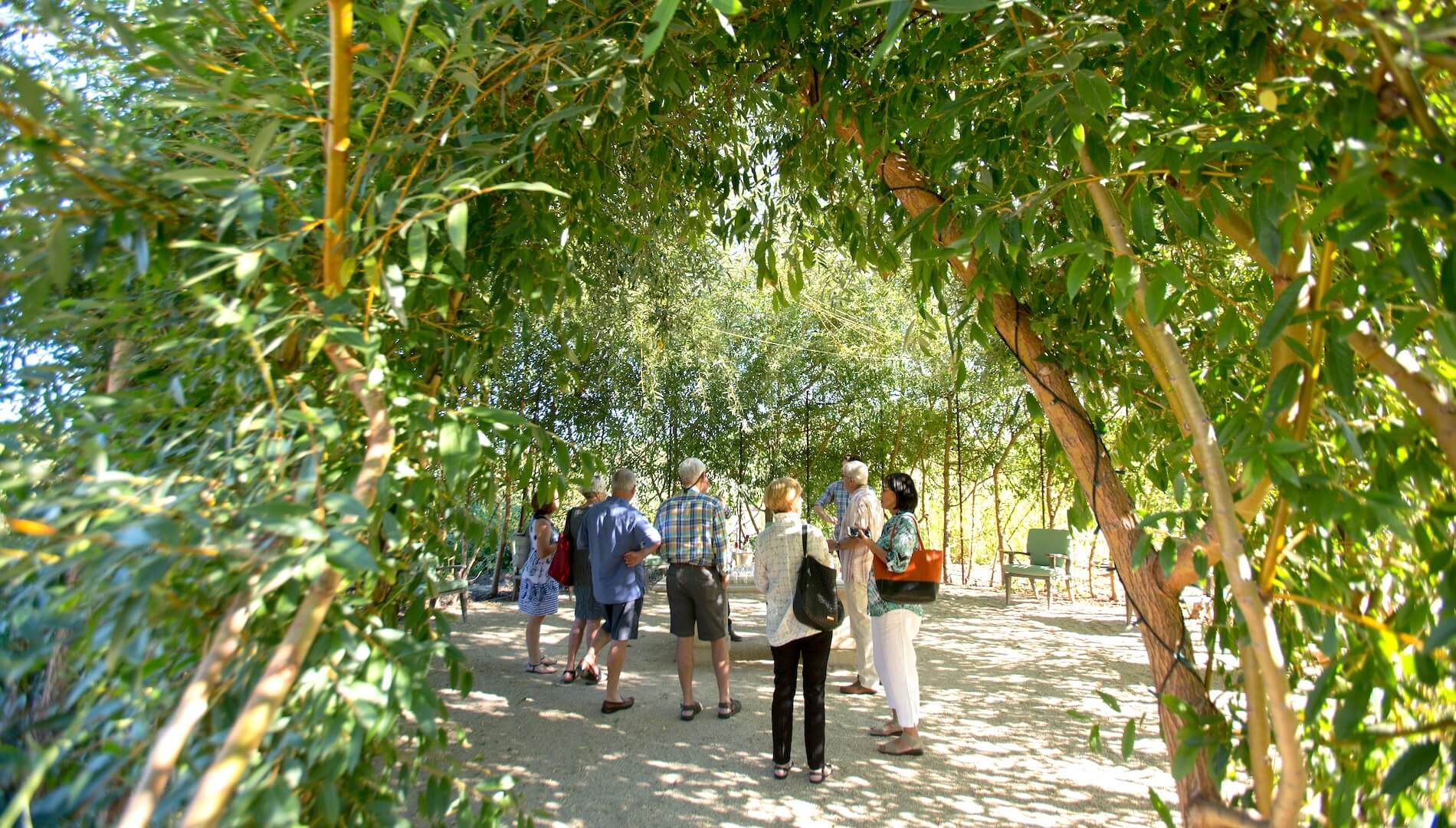Here in the heart of Healdsburg, we’re farming beyond sustainability, toward regeneration. At DaVero Farms & Winery, we grow Italian grape varieties in Sonoma County with a deep reverence for the land. As a regenerative agriculture winery, our goal isn’t to produce the best example of a given variety—it’s to produce the best wines for our climate—wines that express place, purpose, and a promise to future generations.
What Is Regenerative Agriculture and Why It Matters to Wine
So, what does regenerative agriculture mean when it comes to winegrowing? It’s more than organic or sustainable. It’s about giving back to the land: restoring ecosystems, improving soil health, and building resilience in the face of climate change. For us, regenerative agriculture means taking care of our farm in a way that makes it better every year—not just for us, but for everyone it touches.
The most essential—and the most inspiring—part of regenerative farming is also the simplest: a focus on the soil itself. The first principle of regenerative farming is straightforward: never disturb the soil. That means keeping the ground covered year-round, maintaining living roots, and planting a diverse mix of crops. These practices may sound simple, but together they create a living foundation that sustains everything on the farm—from the health of the vines to the character of the wines.
How Regenerative Differs from Organic or Biodynamic Farming
You might wonder how regenerative agriculture compares to organic or biodynamic methods. Organic focuses on replacing synthetic chemicals with carbon-based, biological alternatives. Biodynamic takes a holistic—and sometimes spiritual—approach to farming as a living system. Regenerative is centered on renewing soils and ecosystems, with an ethos not just to sustain the land, but to improve it. We embrace all three.
The Benefits of Regenerative Farming
We see the benefits of regenerative farming every day. Healthy soil teeming with microbial life helps our vines grow stronger and our fruit become more expressive. Because regenerative practices nurture natural balance, we don’t rely on outside sprays or inputs. That balance helps protect the land, our team that tends it, and the life around us. Every step we take is focused on long-term vitality and improving our living farms, not chasing short-term yields. This philosophy just naturally results in beautifully expressive wines.
How Vineyard Soil Shapes the Quality of Regenerative Wines
Great wine starts with living soil. That’s why we focus so much energy on nurturing a rich soil microbiome. It helps our vines absorb nutrients, fend off disease, and adapt naturally to stress— from drought to flood to freeze.
Healthy soil is never static—it’s alive, with microbial and earthworm communities that ebb and flow with the seasons and the soil’s moisture. Water is the medium that carries them through the soil profile, and our role is simply to protect that environment so life underground can thrive uninterrupted. In turn, the microbiome does the real work: recycling nutrients from plant matter and from each other, making them available to the vines in their most natural form.
When our soil thrives, our wines carry the depth, nuance, and clarity that truly reflect this place we call home.
The Role of Biodiversity in Vineyards
Biodiversity is essential to our way of farming. From native flowers to buzzing bees, roaming snakes to grazing piglets and interplanted olives and figs, we create a vineyard ecosystem where every element supports the next.
Birds are one of the most powerful allies in our vineyard. Thanks to the extraordinary abundance of swallows and other birds that are attracted to our farm and thrive here, leafhoppers—normally a constant pest in vineyards—are nearly non-existent. By maintaining habitat and encouraging biodiversity, nature itself keeps the balance, sparing us from intervention.
That balance also supports vine health and long-term resilience.
Water Conservation: Thriving Without Excess Irrigation
Water is precious, especially here in California. That’s why we’ve built a system that works with the land, not against it.
Water Conservation Strategies for Regenerative Vineyards
We carefully trench our fields to slow the flow of storm water across the vineyards, preventing erosion from fast flows that would wash away the precious top soil, while also directing some of it down where it’s needed. This natural “banking” restores the water table, carrying our vineyard through dry seasons. It’s a way of giving back to the land, helping vines sink deep roots and adapt to drought over time.
Compost and Cover Crops: How Compost and Cover Crops Help Us Farm Sustainably
Our soils are fed with homemade compost and a rotating mix of cover crops that fix nitrogen, protect against erosion, and attract beneficial insects.
Much of our compost comes from the farm itself—grape skins and seeds left after harvest, wood chips, and plants from the farm—supplemented with other natural local materials that build fertility and help sequester carbon from the atmosphere.
Our cover crops evolve each year as we trial and refine blends: cereal grains for erosion control, nitrogen-fixing species (like beans and clover) to nourish the vines, and under-vine flowering plants (like yarrow and poppies) to provide habitat for beneficial insects.
These practices not only replace synthetic fertilizers, but they regenerate the land. Every step is guided by nature’s systems, not industry shortcuts.
Carbon Capture: How Regenerative Viticulture Helps Capture Carbon
By improving soil health and increasing organic matter, regenerative viticulture locks carbon in the ground. That means our vineyard is doing more than just growing grapes, it’s actively helping reduce atmospheric carbon. Farming this way makes us feel like we’re part of the climate solution, not the problem.
Does Regenerative Wine Cost More—And Is It Worth It?
Yes, farming regeneratively takes more time, care, and labor. But we believe it’s worth it. Our wines reflect environmental ethics and a deep connection to the land, culminating in a purity of flavor that defines our wines. And based on what we hear from guests, the difference is clear:
“Biodynamic farmed wine = delicious!” – TripAdvisor review
Our Journey from Conventional to Regenerative Farming
We choose regenerative farming every day because it’s the right path forward. When we purchased our second farm—now the Valladares Vineyard estate—it came with depleted soils after 60 years of chemical farming. Over time, and with dedicated work, our founders and team brought that land back to life, turning a struggling property into thriving, biodiverse farmland that is now home to vineyards, thriving gardens, and our hospitality center. Every challenge reaffirms what we believe: farming should heal, not harm.
How Regenerative Practices Influence the Taste of Our Wines
You can taste the difference. Wines from regenerative vineyards express their origins with honesty and nuance. We keep our winemaking low-intervention to let the vineyard speak through each bottle. In fact, it’s the native yeasts from our vineyard and other microbes from the soil that arrive in the cellar and carry out our primary and secondary fermentations. What you get is wine that’s vibrant, expressive, and uniquely ours.
Come See the Difference for Yourself
Curious what regenerative wine tastes like? Plan a visit and explore our farm in person! We’d love to show you what we’re doing and pour you something special while you’re here.
Or browse our current collection in the web store and bring the experience home.
Whether you’re a longtime member or visiting us for the first time, thank you for being part of our regenerative journey.

